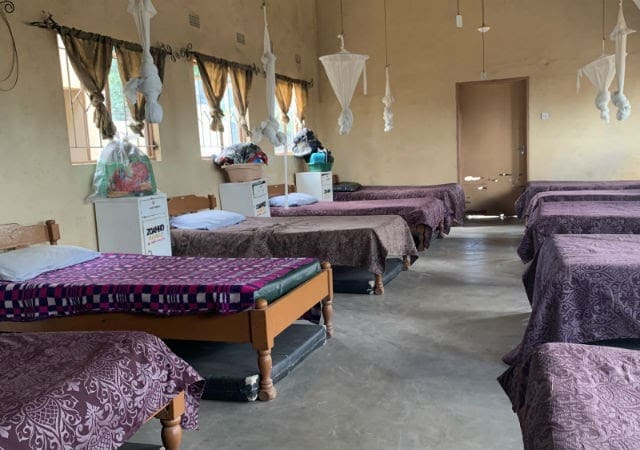File photo of applicants trying to submit their test questions to an immigration officer
BY ABAYOMI ODEWALE
From a keen look at performance of fundamental indices of a standard living in Africa, unemployment remains a predominant misery among African youths. A recent report from MO Ibrahim Foundation, entitled: “Africa’s youth: jobs or migration?” highlights African youths’ frustration in finding commensurate jobs and their quest of migrating in search of green pasture. The age-long weak link between higher education and better job prospects further compound the matter.
The 2019 Ibrahim Forum Report reveals that Africa is the world’s youngest continent with about 60.0% of Africa’s population falling under the age of 25 compared to other continents. Similarly, according to African Development Bank (AfDB), of Africa’s nearly 420 million youth aged 15-35, one-third are unemployed and discouraged, another third are vulnerably employed. With the rising ambition and yearnings for a standard living, more than 40.0% of young Africans are dissatisfied with their current living situation – which they considered bad. This prompts almost 80% of potential African migrants to embark on migration voyage with the hope of better economic or social prospects.
The situation is appalling such that a research by Mercy Corps in Nigeria shows that many youths became affiliated with Boko Haram for business opportunities and economic progress as the group offered loans to youth who used the money for small, informal businesses. The inability to repay the loans led to forced recruitment. Also, interviews by the Institute for Security Studies (ISS) in Somalia shows that 27.0% of respondents joined Al-Shabaab for economic reasons with an income between $150.0 and $500.0 a month.
Advertisement
However, more than 70% of sub-Saharan African migrants move within the continent while most North African migrants moved to Europe or Asia. Based on 2017 migration data, South Africa receives the largest share of African migrants, followed by CÔte d’Ivoire and Uganda. Outside the continent, Europe hosts the largest share of African migrants followed by Asia. But, if given choice, a survey reveals 34.8% of Africans youths would move within the continent, while 48.4% would move to Europe or Northern America.
Among the migrants are African students leaving the continent to study abroad. For host countries offering friendly visas, Africa continually loses human capital as most international students stay after the completion of their studies – in exploring wide arrays of opportunities in their host countries. The apprehension of limited opportunities back home couldn’t be unconnected with their decisions. Though, abroad remittances represented 3.5% of Africa’s 2018 Gross Domestic Product (GDP), and more than the net 2017 Official Development Assistance (ODA), but massive migration comes with unhealthy brain-drain across all sectors in Africa.
This situation could get worse by 2030, when about 30 million youth are expected to enter the African labour market each year. In sub-Saharan Africa alone, 18 million new jobs would be needed annually to absorb new entries in the labour market, while, only 3 million are currently being created.
Advertisement
The Way Forward:
The farming sector accounts for up to 60% of African jobs and roughly 1/3 of the continent’s GDP. Agriculture is projected to remain the main pool of employment for youth in sub-Saharan Africa, but for a majority of youth, agriculture is still seen as outdated, unprofitable and hard work. Certainly, processing and storage facilities, mechanisation, property rights, and incentives would spike the interest of potential farmers.
Implementation of the African Continental Free Trade Area (AfCFTA) which aims to remove barriers to intracontinental trade and investment raises hope of ameliorating the economic problems. Once all the concerned parties ratify the AfCFTA, it promises to foster accelerated industrialisation, economic diversification, spur structural transformation, enhance technological development and improve human capital. GDP is expected to grow by 1.0% and total employment by 1.2%.
If diligently implemented, the AfCFTA could generate a combined consumer and business spending of $6.7 trillion by 2030. And more than 40.0% of Africans will belong to the middle or upper class by 2030.
Advertisement
It is pertinent to create enabling ambience and find lasting ways of fixing: the epileptic electricity, dilapidated infrastructures, decayed health care facilities, outdated educational facilities among others. And getting rid of monopoly but embracing free market will set Africa on the paths of prosperity and brain gain – in no distant time.
Odewale, a fellow at African Liberty, tweets @ODEWALEAbayomi
Views expressed by contributors are strictly personal and not of TheCable.
Add a comment






